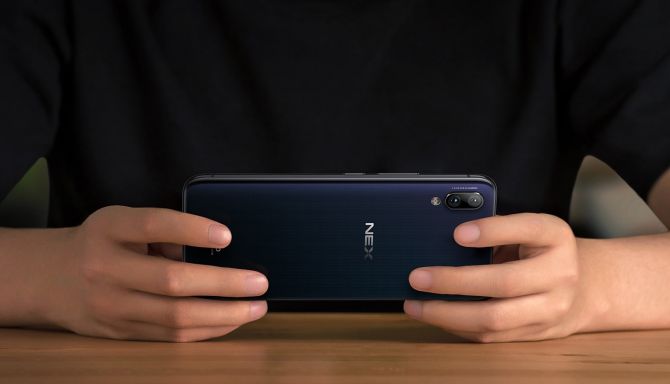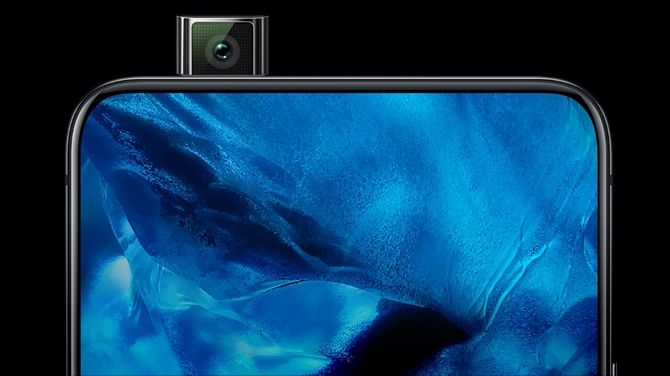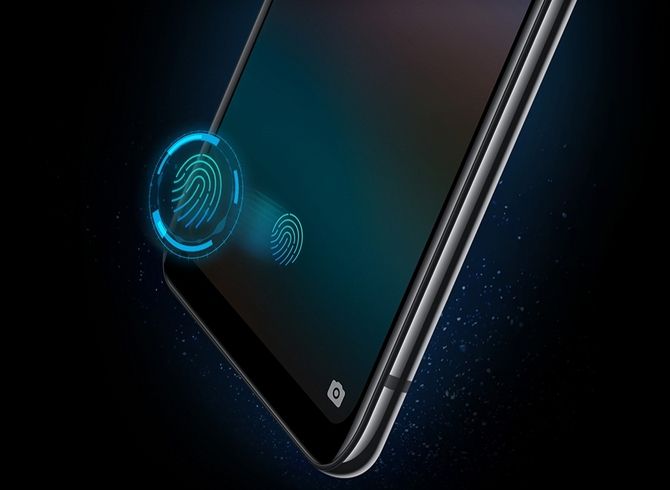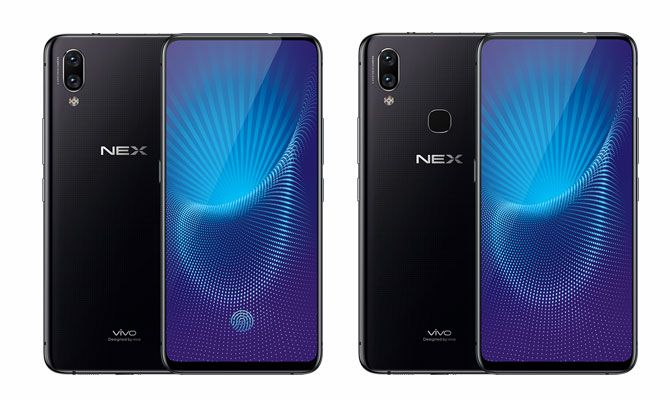As the race for edge-to-edge phone displays continue, Vivo leads the way in its new flagship Vivo NEX series, says Ashish Narsale.

The Vivo NEX series comes with edge-to-edge phone display having approximately 91.24 per cent screen-to-body ratio (screen-to-body ratio is the area that the display occupies with respect to phone's height and width) in a 6.38 inch phone body.
This results in an edge-to-edge full screen display that is almost bezel-less, with just a 1.71 mm bezel on the left and right sides of the phone and a 2.16 mm bezel on the top.
The bezel at the bottom, though, is thicker with respect to all the three sides.
The innovation
The Vivo NEX series, which is now commercially available (not in India as yet), was showcased as a prototype at the Mobile World Congress held in January 2018 at Barcelona. It was then known as the Vivo Apex.
As there is no bezel or notch for the earpiece, front camera proximity sensor and light sensor, Vivo has come up with some innovations.

The front camera is hidden behind the display and is elevated automatically using a motorised mechanism when the camera is triggered through the camera app.
Though this camera elevation may look cool, it has left me wondering about its smooth functioning and consistency.
Vivo has replaced the conventional earpiece with a screen SoundCasting technology which turns the entire screen into a speaker. As a result, the phone benefits by reducing the top bezel.
According to Vivo, the screen SoundCasting technology gives a better bass and a softer treble when compared to conventional speakers.
The proximity and light sensors are hidden at the top and the bottom bezel to provide more display real estate.
The narrow bezels, however, also make me wonder about the possibilities of damage on impact.

For the Vivo NEX S to keep the fingerprint sensor at the front bottom of the screen, the most ergonomic position, Vivo borrows the In-Display fingerprint scanning technology from its predecessors, X20 and X21.
The fingerprint sensor is hidden under the display and is accessible when you touch that part of the screen, thus eliminating the area occupied by the conventional fingerprint scanner. This makes it possible to have full screen display with a minimum bezel.
The fingerprint scanner on Vivo NEX A is positioned at the rear centre of the phone.

Specifications
Barring the innovation, the phones have the usual flagship specifications.
The Vivo NEX variants NEX S and NEX A look and have almost similar specifications. What differentiates them are their processors and the placement of the fingerprint scanner.
Both variants are 6.37 inch tall and 3.03 inch wide with an all glass design; as a result, they don't offer wireless charging capability.
They boast a 6.59 inch Super AMOLED display with screen resolution of FHD+ (2316 x 1080).
The NEX S is driven by Qualcomm's Snapdragon 845 SoC, with an embedded Adreno 630 as graphics processor.
The NEX A is driven by Qualcomm's Snapdragon 710 SoC, with an embedded Adreno 616 as graphics processor.
The NEX S is available in the 128/256 GB ROM and 8 GB ROM variants, whereas the NEX A is available in only the 128 GB ROM and 6 GB RAM version.
Both phones do not support memory expansion via SD card.
The camera in NEX variants is AI capable and decked with features like AI scene recognition, AI HDR, AI filters and AI composition.
Both the variants have a dual setup camera on the rear as the primary camera comes with f/1.8, 12 MP dual pixel sensor and the secondary snapper is a f/2.4, 5 MP with 4 axis OIS (Optical Image Stabilisation).
The front elevating camera is f/2.0 8MP.
Just like Samsung's Bixby, Vivo incorporates the Jovi intelligent voice assistant and a dedicated button on the phone to trigger its intelligent voice assistant.
Vivo retains the 3.5mm audio jack and includes the Type-C port for charging and data transfer. It includes a HI-FI audio chip for better sound amplification.
The phones are currently only available in China as NEX S 8GB+128GB at Yuan 4498 (approximately ₹47,708), 8GB+256GB at Yuan 4998 (approximately ₹53,011) and NEX A for Yuan 3898 (approximately ₹41,344).
Vivo has made a commendable innovation in the race to build a bezel-less phone but misses out on few flagship features such as IP certification for dust and water proofing and, of course, wireless charging.
When we compare the NEX S and NEX A, the NEX S is better priced considering you are getting an In-Display fingerprint scanner, a flagship processor, more RAM and higher storage space just for ₹10,000 more.
Though both phones are packed with innovation and the technology is new, we would rather wait for the next NEX phones before knowing how these technologies fare at the user end.











